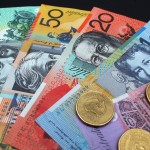The yen touched fresh 5-year lows against the US dollar on Friday, following Federal Reserve’s decision to scale back its monetary stimulus.
Having hit a session high at 104.64 at 13:30 GMT, the strongest level since October 2008, USD/JPY closed at 104.10 on Friday, losing 0.14% on a daily basis. However, USD/JPY cross settled the week 0.85% higher, marking an eight consecutive week of gains, the longest streak since February. Support was likely to be received at December 19th low, 103.79, while resistance was to be encountered at October 5th high 2008 high, 105.34.
The Federal Reserve announced a plan to reduce the pace of its monthly asset purchases to $75 billion from $85 billion, on its two-day policy meeting, concluded on Wednesday.
Fed Chairman Ben Bernanke announced that the central bank purchases will be divided between $40 billion in Treasuries and $35 billion in mortgage bonds starting from the beginning of 2014.
The Federal Reserve Bank decided also to keep its benchmark interest range unchanged at 0.00% to 0.25%. The central bank reassured that the benchmark rate will likely stay low, saying in its statement that “it likely will be appropriate to maintain the current target range for the federal funds rate well past the time that the unemployment rate declines below 6.5% percent, especially if projected inflation continues to run below the Committee’s 2% longer-run goal”.
“The mechanics of the dollar story are changing, the normalization of the U.S. growth story is getting attractive for global investors,” said Sebastien Galy, a New York-based senior foreign-exchange strategist at Societe Generale SA, cited by Bloomberg. Sebastien Galy added: “Investors are moving back their money to the dollar after years of selling the dollar. It’s a systemic shift that’s happening.”
On Friday, the US Bureau of Economic Analysis, released a report that showed the GDP grew at a revised 4.1% annualized rate in the third quarter, the strongest final reading since the fourth quarter of 2009 and up from preliminary estimates in November, which showed the GDP will rise 3.6% this month.
A separate report by the US Department of Commerce revealed the final Personal Consumption Expenditures for the third quarter rose to 2.0%, from preliminary estimates of 1.4% in November and up from analysts’ expectations of 1.4% increase.
The greenback was pressured on Thursday, after a report by the US Department of Labor revealed the number of people, who filed for unemployment benefits for the week ended December 14th, increased to 379 000 from 369 000 the previous week. Analysts projected that the jobless claims will lower to 332 000.
A report by the National Association of Realtors, added pressure on the greenback, showing that home resales fell for a third straight month to a one-year low in November. Existing home sales slid to 4.9 million, trailing projections for a drop to 5.03 million from October’s 5.12 million used homes sold.
Meanwhile, the yen was pressured after BoJ statement on Friday, saying the central bank will keep its monetary base policy target and the pace of asset purchases unchanged.
BoJ, led by Governor Haruhiko Kuroda, decided on its two-day policy meeting concluded today to retain its plan of adding 60 trillion yen to 70 trillion yen a year to the monetary base. In its statement the Japanese central bank said that it will maintain its quantitative easing, until the targeted 2 percent annual inflation stabilizes. The BoJ announced that it will watch closely the risks and make policy adjustments if needed. In a Bloomberg poll, most of the surveyed economists predicted that the central bank will escalate its stimulus in April next year, after the national sales tax is raised.
Japan is in a process of recovery after the 15-year period of deflation. Bank of Japan has been purchasing more than 7 trillion JPY (68.4 billion USD) of government bonds each month in its struggle to achieve 2% inflation in two years since April. There are growing concerns that BoJ will have to increase the scale of its asset-purchasing program in the coming year, which puts heavy pressure on the yen.
USD/CHF cross may be influenced by a number of reports, scheduled for publication during next week, as follows:
On Monday (December 23rd), the United States will release reports on personal income and personal spending for November, accompanied by the core personal consumption expenditures (PCE) price index for the same month. The change in the core PCE price index in November, compared to a year ago will also be reported. The same day the University of Michigan will publish the results of its consumer confidence survey for December.
On Tuesday (December 24th), reports on durable goods orders, durable goods orders excluding transportation and those excluding defense in the US will be reported for November. A separate report will probably show that new home sales contracted to 435 000 in November, from 444 000 a month earlier.
On Wednesday, (December 25th), the statement of the BoJ Governor Haruhiko Kuroda is expected. Meanwhile, not reports will be released in the US due to Christmas Holiday.
On Thursday, (December 26th), the research group Markit Economics will publish its Japanese Purchasing Managers Index for December, accompanied by the Housing starts in the country for November, compared to a year ago. Meanwhile, the US Department of Labor will report the number of people who filed for unemployment benefits for the week ended December 21st. The initial jobless claims may increase to 382 000, from 379 000 last week.
On Friday, (December 27th), the Japanese CPI for December, compared to the same month a year ago will be reported, the unemployment rate in November, accompanied by industrial production and retail sales on a monthly and annual base for November. In the US no important economic indicators are expected to be released.





